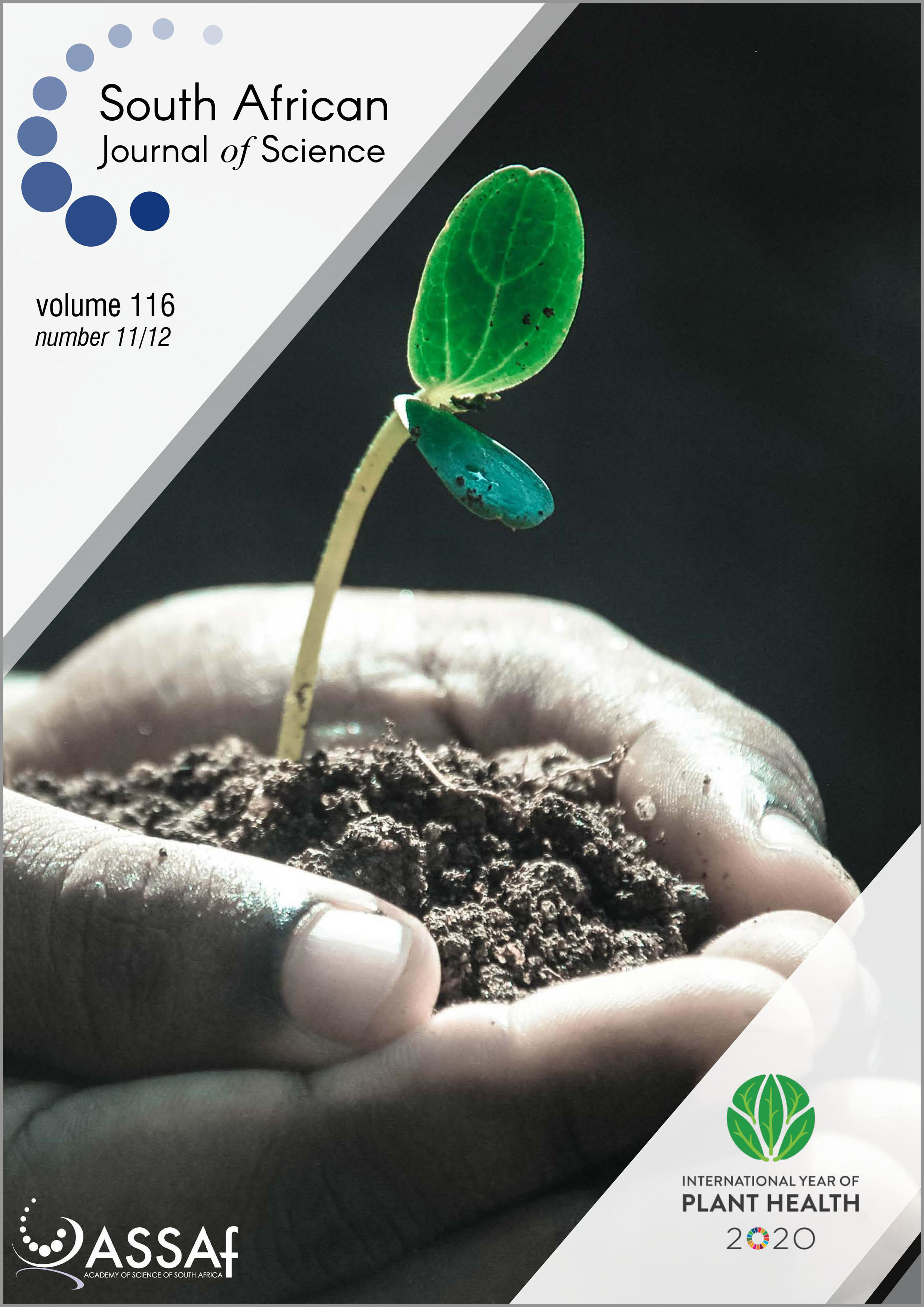Tree health in South Africa: Retrospect and prospect
DOI:
https://doi.org/10.17159/sajs.2020/8038Keywords:
forest pathology, forest entomology, tree diseases, forest pestsAbstract
South Africa is a country with very limited natural forest cover. Consequently, the timber and fibre needs of the country cannot be provided for from indigenous forest. It is largely for this reason that South Africa initially developed a highly productive plantation forest industry, which today makes a substantial contribution to the local economy. These plantations are based on non-native species of Eucalyptus, Pinus and Australian Acacia. In the early years of establishment, South African plantations were relatively free of pest and pathogen problems. But, over time, an increasing number of insects, fungi and bacteria have emerged as serious threats to the sustainability of the forestry industry. Numerous native pests and pathogens, especially insects, have adapted to these introduced tree species to cause damage or disease. The problem is compounded by the accidental introduction of non-native pests and pathogens, and this has been at a rapidly increasing rate over the past three decades. Some of these introduced pests and pathogens also threaten the fitness and even the survival of many indigenous South African tree species. Fortunately, South Africa has developed an impressive knowledge base and range of integrated management options to deal with these problems. This development was first driven by government programmes, and in more recent years by public–private partnerships between industry, universities and government. It is clear from the pattern of emergence of pests and pathogens in recent years that South Africa will deal with an increasing number of these problems and a continuously changing tree health environment. This requires robust investment in both quarantine and mitigation mechanisms to protect the country’s biodiversity as well as to ensure the sustainability of its wood and fibre industries.
Significance:
- This review about tree health in South Africa was in part inspired by the 2020 International Year of Plant Health. Plant health, and particularly tree health, is an important topic in regard to the sustainability of our forestry industry and conservation of our native forests. South Africa has been a leader in the field and this review highlights some of the achievements that researchers in the country, both past and present, have attained.
Published
Issue
Section
License

All articles are published under a Creative Commons Attribution 4.0 International Licence
Copyright is retained by the authors. Readers are welcome to reproduce, share and adapt the content without permission provided the source is attributed.
Disclaimer: The publisher and editors accept no responsibility for statements made by the authors
How to Cite
- Abstract 921
- PDF 804
- EPUB 140
- XML 287












.png)